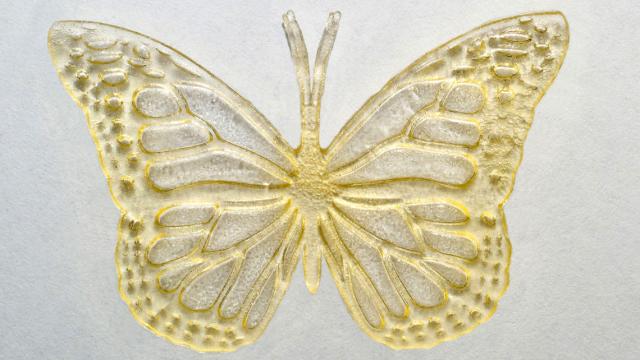There are lots of reasons not to eat greasy deep-fried fast food, the least of which being the challenges involved with disposing of used cooking oil (clogged sewers). But researchers at the University of Toronto found a way to turn oil from a deep fryer into a light-sensitive plastic for 3D printers.
The research was recently published in the ACS Sustainable Chemistry & Engineering journal but it started with a professor at the University of Toronto Scarborough who started dabbling with 3D printers about three years ago. He noticed that the basic molecules used to create commercially available plastic resins for 3D printers were similar to the fats used in cooking oil. That started a quest to find a source of used cooking oil from a restaurant which turned out to be none other than Ronald McDonald as a willing donor. That’s not completely surprising, however, given the tremendous costs the second-largest restaurant chain in the world has to deal with when it comes to disposing of cooking oil.
To turn cooking oil into usable resin requires a fairly straightforward chemical process. Once the oil is filtered and cleaned (a rare time when overcooked, extra crispy french fry bits aren’t welcome) a photoinitiator is added which causes the oil to undergo a significant change in its physical properties when exposed to light. The resulting resin is then suitable for 3D printers that use stereolithography techniques to build up a 3D model. Instead of melting plastic that’s solid at room temperature and extruding thousands of thin layers to build up a model, stereolithography starts with a container filled with ever-increasing thin layers of liquid resin that are hardened with light until a model is finished.
A local #ScarbTO @McDonaldsCanada gave the researchers the old oil to test it out—and it WORKED! ???????? https://t.co/524Vhxx9WV #UTSC #UofT pic.twitter.com/XRFNSOSLZn
— University of Toronto Scarborough (@UTSC) January 30, 2020
A litre of cooking oil waste yielded 420 milliliters of resin, which is a little less than half of its original volume. One test involved 3D printing a plastic butterfly and the results included details as small as 100 micrometres in size, while the model itself was thermally stable meaning it wouldn’t melt or become structurally fragile at or above room temperature. Furthermore, the 3D printed models are completely biodegradable, with a sample that was buried in the ground losing 20 per cent of its overall weight after hungry microbes worked away at it for a period of two weeks.
The most important benefit of the recycled oil resin might be its price. The resins typically used for high-resolution stereolithography printers can cost over $750 per litre. But the recycled resin could potentially cost as little as $450 per metric ton. It could be a nice little side business for fast-food chains like McDonald’s, although it would unfortunately give them even more incentive to push their fried foods on customers who in reality should be dialling it back.
